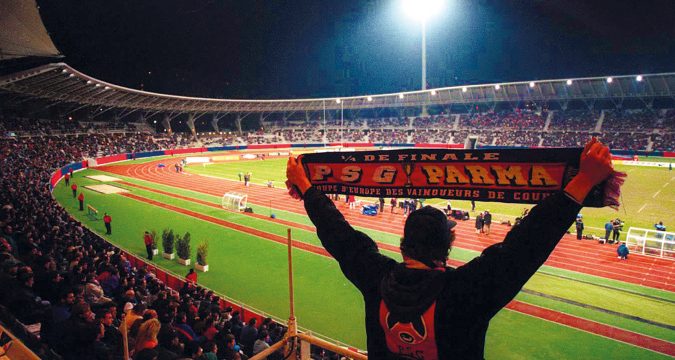
Every month, Dave Hadfield, one of rugby league’s most respected writers, pens ‘Hadfield’s Half-Dozen’ for Rugby League World. To read it first, buy a copy of Rugby League World every month, available in all good stores or online at totalrl.com/rlw.
1 CARLISLE 1981
Just for a brief moment in the early-80s, when Fulham were looking as though they might have legs, it seemed possible that Rugby League could put down roots anywhere.
Carlisle, as the largest centre of population in an RL county, was an obvious target and, on the field at any rate, they didn’t do badly. The freakish try-scoring record of Mick Morgan had something to do with that as they won promotion to the old First Division.
After that, however, the familiar pattern of debt and nomadic existence set in and Carlisle were effectively absorbed by Barrow.
2 BLACKPOOL 1954

It is with tears in my eyes that I type the words Blackpool and failure in the same paragraph, but the acid test for a successful expansion is that the club should still be around.
Sadly, the club at which Brian Bevan and Billy Boston finished their careers and which enjoyed a purple patch in the late 70s, when they reached the final of the John Player Trophy and won promotion, is no more.
They had their moments, though, and reappeared in several guises before the plug was finally pulled. The Rugby League link with the town lives on in the Summer Bash.
3 LONDON 1935
Anyone who thinks that Rugby League’s aspiration for a club in the capital is a recent thing should look back on the case of Acton & Willesden and Streatham & Mitcham.
Despite catchy names from the same stable as ‘Bob and Carol and Ted and Alice’ and ‘Rita, Sue and Bob Too’ the two London clubs failed to stay the course.
Both clubs were set up by greyhound impresario Sydney Parkes, but A&W lasted just one season before they were disbanded and their players were transferred to S&M.
Streatham did have one major publicity coup when they signed the former All Black, George Nepia, but they folded in 1937.
4 CARDIFF 1981
Another recurring theme for Rugby League – having a presence in the Valleys.
The Blue Dragons certainly talked the talk, especially when it came to persuading Welsh rugby union internationals – just a shade past their best – to sign on the dotted line.
Steve Fenwick and Paul Ringer were two of the more notable recruits, but the one who could have been really good, had he switched earlier, was Tommy David.
Cardiff’s future, however, saw them at Bridgend then out of the league altogether. League’s foothold in South Wales now depends on the homespun Scorpions outfit.
5 KENT 1983

Another product of the early-80s surge of optimism, Kent Invicta played at Maidstone, but soon went bankrupt. They were invited to transfer their operations across the Thames estuary to Southend.
They signed one famous name in the Australian prop, John ‘Dallas’ Donnelly, but their lack of any impact on their locality is illustrated by crowds of 85 and 86 for two of their fixtures at Roots Hall.
They were kicked out by the Rugby League before the start of the 1985-6 season.
6 PARIS ST GERMAIN 1996
The conception of Super League always included a French dimension. In the absence of any French club remotely up to the task, Super League decided to create one.
PSG’s opening night made it even look as though it could work in Paris, despite the lack of any roots in the city. Reality soon set in, though, as it emerged that just about all their players were in France illegally. Someone could have gone to jail for that; the phrase ‘built on sand’ fits them even better than it does the more obvious seaside locations, like Blackpool and Southend.
If you wanted to be very charitable, you might say that they prepared the way for the Catalan Dragons. They certainly demonstrated what not to do.
